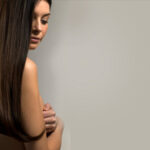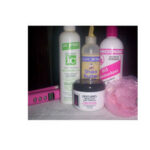Seborrheic dermatitis is a skin disease which causes flaking of the skin. Though usually only affecting the scalp, the disease can also affect other parts of the body, such as the eyebrows, eyelids, face, chest, and creases in limbs. Essentially, the disease afflicts areas of the body which have hair. Seborrheic dermatitis is known as cradle cap when affecting infants. The mildest form of the disease is commonly known as dandruff and affects an estimated 15-20% of the world population. The more severe versions of seborrheic dermatitis affect about 1-2% of the world population.
Seborrheic dermatitis has multiple symptoms. Temporary hair loss is often seen in milder forms of seborrheic dermatitis. This temporary hair loss can become permanent if the seborrheic dermatitis is left untreated. Itchiness is another symptom of seborrheic dermatitis; the many people with dandruff can attest to this. Skin redness or inflammation of the infected area often comes with the itchiness. The sticky flakes known as dandruff appear in many cases of seborrheic dermatitis. Seborrheic dermatitis can be caused by many factors. The disease seems to be genetic as it is often passed down. Also, a fungus known as malassezia is known to cause skin cause skin problems such as seborrheic dermatitis. Hormonal and seasonal factors can cause seborrheic dermatitis.
For most patients with seborrheic dermatitis, a simple anti-dandruff shampoo containing 2.5 percent selenium sulfide or 1 to 2 percent pyrithione zinc. Regardless of which anti-dandruff shampoo is used, the shampoo should be left in hair for 5-10 minutes to make sure the shampoo takes effect. After rinsing the shampoo, a moisturizing shampoo should be used to prevent the oiliness of the scalp which causes seborrheic dermatitis. The infant form of seborrheic dermatitis is a temporary ailment, disappearing by the age of 6-12 months. Treating the hair with a mild anti-dandruff shampoo is sufficient. The treatment of seborrheic dermatitis is a good time to introduce a lifestyle change. Hygiene plays an important role in seborrheic dermatitis, as showering and using soap on the affected areas removes oils on areas with the disease. More severe cases of seborrheic dermatitis than simple dandruff, or uncommon, but still do occur. The treatment plan for these cases involve keratolytics such as salicyclic acid and sulfur. Keratolytics thins and weakens all the excess, dried skin, so that it easily comes off like dandruff. For infants, only mild keratolytics are ever used. Keratolytics are also used as a treatment for warts and any other lesions caused by excess skin.
Shampoos and keratolytics can only go so far. Eating healthily, with a diet containing many fruits and vegetables, clears up skin naturally, getting rid of nuisances such as acne which often come and go with seborrheic dermatitis. Also, since seborrheic dermatitis often has flare-ups during high-stress periods, eliminating stress is a great boost in a person’s fight against seborrheic dermatitis. No matter how much you shampoo your hair or how many chemicals you apply to the affected area, eliminating stress and having a healthy diet are necessary to ridding yourself of seborrheic dermatitis. Trans fats and high amounts of saturated fats (fast food in general) will cause flare-ups. The summer season tends to make seborrheic dermatitis more tolerable; outdoor activity is especially essential during the summer.






